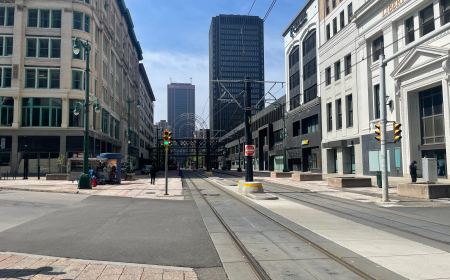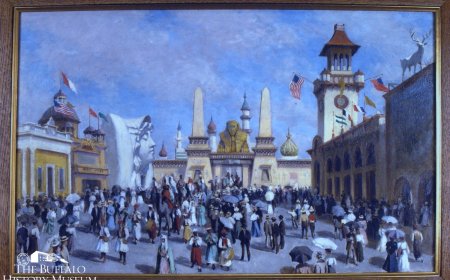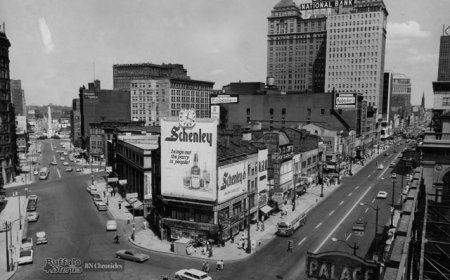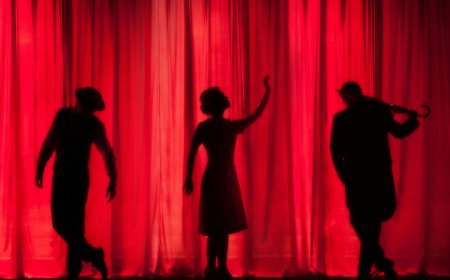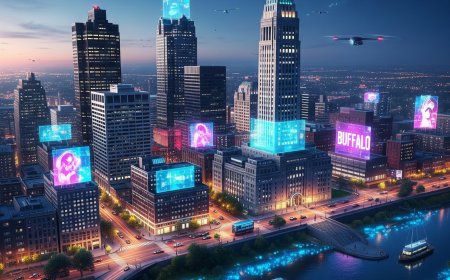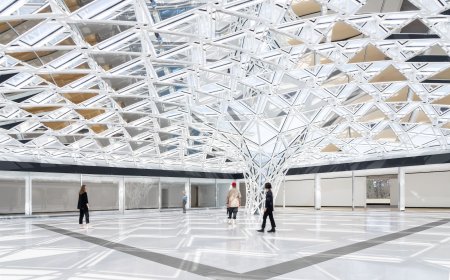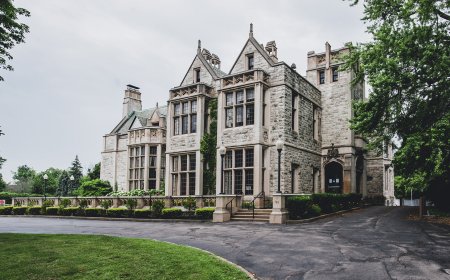Strangest Facts About Buffalo You Won’t Believe Are True
From electric chairs to mystery tunnels, Western New York is full of weird, wonderful stories that defy expectation and enrich our understanding of this tenacious city.
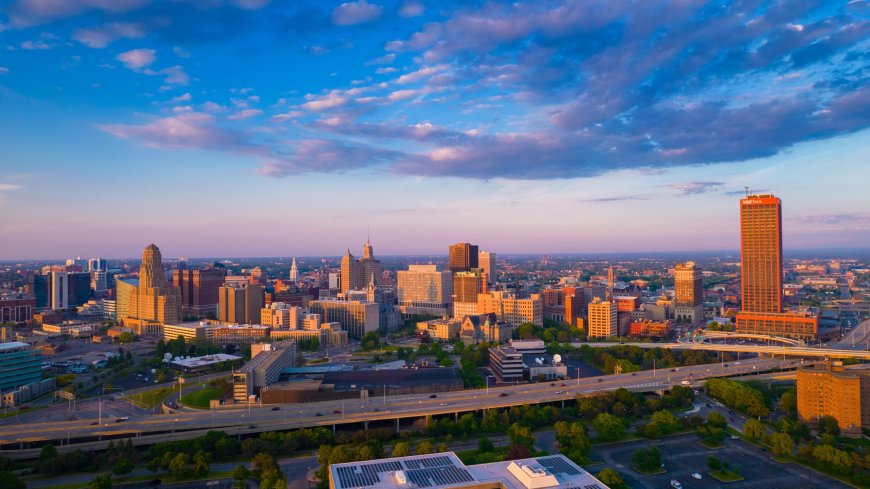
You think you know Buffalo—wings, Bills, blizzards, the good-natured grumble of a true Western New Yorker. But this city, nestled at the confluence of Lake Erie and the Niagara River, harbors secrets, quirks, and stories that can still make even lifelong locals pause and exclaim, “Wait, seriously?” Beyond its well-known cultural touchstones, Buffalo boasts a history steeped in the unexpected, a place where innovation, ambition, and sheer happenstance have woven a tapestry of tales as bizarre as they are compelling. These are the strangest, coolest, and most utterly Buffalo facts you (probably) didn’t know, facts that truly encapsulate the unique spirit of the Queen City.
1. ⚡ The Electric Chair Was Invented by a Buffalo Dentist
Imagine a 19th-century dental practice, not just focused on fillings and extractions, but on the macabre pursuit of a "more humane" method of execution. Such was the unusual preoccupation of Dr. Alfred Southwick, a Buffalo dentist whose name is forever linked to one of history's most controversial inventions: the electric chair. In 1881, Southwick reportedly witnessed an intoxicated dockworker die instantly after touching a live electric generator. This grim event sparked a morbid curiosity in the good doctor, leading him to believe that electricity could offer a less barbaric alternative to the often-botched hangings of the era. He began experimenting, initially on stray dogs at the Buffalo SPCA, meticulously calculating voltages and currents. His early designs, perhaps influenced by his daily work, even resembled a modified dental chair to restrain the condemned. By 1888, his efforts, championed by the New York State Commission on Human Execution, led to the adoption of electrocution as the state's official method of capital punishment. The first electric chair was famously used at Auburn Prison in 1890 to execute William Kemmler. While Southwick’s intentions were ostensibly to alleviate suffering, the electric chair’s legacy became one of intense debate and often gruesome spectacle. It's a chilling reminder that Buffalo, for all its progressive ambitions, once contributed a truly shocking (pun intended) invention to the world.
2. 🏛️ We Were Almost the Nation’s Capital—For a Second
The year 1901 brought the Pan-American Exposition to Buffalo, a grand showcase of technological progress and cultural exchange, drawing visitors from across the globe. Among them was President William McKinley. On September 6, 1901, while shaking hands with the public at the Temple of Music, McKinley was shot twice by anarchist Leon Czolgosz. The subsequent days were a rollercoaster of hope and despair as the nation watched. Vice President Theodore Roosevelt, who had been vacationing in the Adirondacks, rushed to Buffalo. When McKinley’s condition tragically worsened and he succumbed to his wounds on September 14th, the city of Buffalo became, for a brief, surreal moment, the undisputed center of American power. Roosevelt was swiftly sworn in as the 26th President of the United States in the library of the Ansley Wilcox Mansion on Delaware Avenue. This impromptu inauguration, conducted amidst a cloud of national grief and uncertainty, solidified Buffalo’s place in the annals of presidential history. It was a singular instance where the weight of the nation’s leadership, however temporary, rested squarely on the shoulders of this Western New York city, a fascinating footnote to its already rich past.
3. 🚇 Our Subway System Is Real (Kind of)
To the uninitiated, Buffalo’s Metro Rail might seem like a mere whisper in the bustling symphony of urban transit. Often playfully referred to as the smallest subway system in the country, it certainly possesses a unique charm. The 6.4-mile single line operates distinctly: running aboveground along the vibrant Main Street corridor downtown, transforming it into a pedestrian-friendly zone, before dramatically dipping underground for six additional stops. This subterranean stretch, with its robust stations and proper subway tunnels, genuinely offers a rapid transit experience. For out-of-towners, it’s a curious anomaly, a light rail that abruptly becomes a full-fledged subway. For locals, it’s a source of both affectionate jest and genuine utility, particularly connecting the University at Buffalo’s South Campus to the downtown core and its various attractions like Canalside and the Theatre District. Despite its modest scale, the Metro Rail represents Buffalo’s continued investment in public infrastructure, a hidden gem that quietly hums beneath the city's surface, proving that sometimes, even the "smallest" can be mighty.
4. 🦈 Meet Shark Girl: Buffalo’s Silent Icon
Perched quietly on a bench at Canalside, her striped dress and enigmatic, toothy smile frozen in time, she is an undeniable icon of modern Buffalo: Shark Girl. This unique public art installation by artist Casey Riordan Millard has transcended its origins to become a beloved, and perhaps slightly bewildering, symbol of the city. Part shark, part girl, her presence sparks endless selfies, speculative conversations, and a growing cult following. Is she a misunderstood creature? A symbol of childhood innocence encountering the wild? Or simply a whimsical, playful addition to the waterfront? No one’s quite certain, and that’s precisely part of her enduring appeal. Shark Girl embodies Buffalo’s embrace of the unconventional, its willingness to welcome and celebrate art that might raise an eyebrow but ultimately captures the heart. She’s become a silent ambassador, inviting visitors to ponder her story while enjoying the revitalized waterfront, adding a touch of mysterious charm to the city's burgeoning arts scene.
5. 🌊 The Name “Buffalo” Might Just Be a Mistake
One of the most persistent and charming mysteries surrounding Buffalo is the origin of its name. Despite the city’s deep connection with the majestic American bison, the historical truth is that no bison (often erroneously called "buffalo") ever roamed these particular parts of Western New York. So, how did the city come to bear such a name? One leading theory suggests a delightful linguistic misadventure. French explorers, navigating the waterways centuries ago, might have encountered the "Buffalo Creek" (now the Buffalo River) and, captivated by its beauty, uttered the phrase “beau fleuve,” meaning “beautiful river.” Through the mists of time and the inevitable mishearings and phonetic shifts common in early colonial mapping, “beau fleuve” could have been corrupted into “Buffalo.” While definitive proof remains elusive, this theory holds a certain poetic charm, suggesting that Buffalo's identity might be founded on a beautiful misunderstanding. It wouldn’t be the first time New Yorkers, or any English speakers for that matter, mangled a vowel or two when confronted with foreign sounds, and it adds another layer of intrigue to the city’s unique identity.
6. ❄️ Niagara Falls Once... Froze?
It sounds like an impossibility, a tall tale spun during a particularly brutal Western New York winter. But in March 1848, the mighty Niagara Falls, known for its roaring, ceaseless power, did indeed come to a complete, astonishing halt. For nearly two full days, an immense ice jam upstream, stretching for miles, choked off the flow of water to both the American and Horseshoe Falls. The spectacle was unprecedented. Townspeople, disbelieving their eyes, walked along the dry riverbed, collecting artifacts and marveling at the exposed rock formations usually hidden beneath millions of gallons of churning water. The silence was profound, replacing the thunderous roar with an eerie calm. This remarkable event serves as irrefutable proof that yes, Western New York cold can be so record-breaking, so intensely severe, that even one of the world's most powerful waterfalls can be brought to a standstill. It’s a vivid illustration of nature’s formidable power and a testament to the extreme climatic conditions that can grip this region.
7. 🕳️ There’s a Hidden Tunnel System Beneath the City
Beneath the bustling streets and historic buildings of Buffalo lies a labyrinthine network of “mystery tunnels,” long inspiring hushed ghost stories and elaborate conspiracy theories among locals. While the exact origins and full extent of these subterranean passages remain shrouded in enigma, their existence is undeniable. Some speculate they were secret routes for speakeasies during the Prohibition era, allowing illicit goods and revelers to move undetected. Others suggest more mundane, yet still intriguing, purposes such as coal distribution systems for early industrial buildings or even clandestine Masonic rituals. While definitive explanations are scarce, these tunnels are a tangible, hidden part of Buffalo’s past, whispering tales of forgotten histories and clandestine activities. They’re real, they’re hidden, and they are very, very Buffalo, adding a layer of thrilling, unresolved mystery to the city's architectural and historical landscape.
8. 💡 Buffalo Was the First City in the World with Electrically Lit Streets
Before New York City was known as "The City That Never Sleeps" and long before widespread electrical grids became the norm, Buffalo held a groundbreaking distinction: it was the first city in the world to have widespread electrically lit streets. Thanks to its proximity to the hydroelectric power generated by Niagara Falls, Buffalo leveraged this clean, abundant energy source in 1886 to illuminate its downtown thoroughfares. This pioneering achievement earned Buffalo the nickname "The City of Light." It was a bold step into the future, showcasing a vision of urban modernity that predated many other major metropolises. This fact often surprises even long-time residents, underscoring Buffalo’s significant, albeit sometimes overlooked, role in the history of technological advancement and urban development.
9. 🏛️ We Have More Frank Lloyd Wright Buildings Than Almost Any Other City
While Chicago often gets the lion's share of attention for its architectural prowess, Buffalo quietly boasts an extraordinary collection of structures designed by the legendary architect Frank Lloyd Wright. In fact, only Chicago can claim more of his masterpieces. The crown jewel is undoubtedly the Darwin D. Martin House Complex, a sprawling Prairie Style estate considered one of Wright's finest residential works. But Buffalo’s Wright legacy extends beyond this, including the Graycliff Estate on the shores of Lake Erie, the Fontana Boathouse, and even a unique gas station design. This concentration of Wright’s genius makes Buffalo an essential pilgrimage site for architecture enthusiasts, revealing a deeper layer of artistic and historical significance often overshadowed by its more famous attributes.
10. 🦃 Buffalo Hosts the Longest Continuously Running Footrace in America
Before the iconic Thanksgiving Day parades, there was Buffalo's Turkey Trot. This beloved annual tradition, a footrace held every Thanksgiving morning, lays claim to being the longest continuously running footrace in the United States. Since its inception in 1896, the Buffalo Turkey Trot has persevered through wars, depressions, and countless blizzards, a testament to the city’s unwavering spirit and love for community. What started as a modest local event has grown into a massive gathering, drawing thousands of runners, many in costumes, who brave the often-chilly November air to participate in a cherished piece of American sporting history. It's a quirky, enduring tradition that perfectly embodies Buffalo's resilient and festive nature.
Bonus Strange Truth: Our Chicken Wing Fame? An Accident
Everyone knows the Anchor Bar is the undisputed birthplace of the iconic Buffalo wing. But fewer know that this globally renowned delicacy wasn't the result of meticulous culinary planning or a grand marketing scheme. Instead, it was born from a moment of late-night improvisation and hunger. On a Friday night in 1964, Teresa Bellissimo, co-owner of the Anchor Bar, needed a quick snack for her son and his hungry friends who had just arrived at the bar. With limited ingredients on hand, she took some chicken wings, often discarded or used for soup stock, deep-fried them, and then tossed them in a simple butter and hot sauce mixture. Served with blue cheese dressing and celery, this humble, impromptu dish was an instant hit. From that accidental, late-night snack in a local bar, the Buffalo wing exploded in popularity, becoming a national, then international, sensation. It’s a culinary Cinderella story, proving that sometimes, the greatest innovations arise from the most unexpected circumstances—and that’s just how WNY rolls.
Final Thought
Buffalo isn’t merely "the city of good neighbors." It’s a city of strange wonders, half-whispered legends, and a history that’s far richer, more inventive, and undeniably weirder than you’d ever expect. From pioneering electricity to accidental culinary triumphs, from presidential inaugurations to subterranean secrets, Buffalo continually defies easy categorization. It’s this peculiar blend of grit, innovation, and unexpected charm that gives us character. It’s what keeps things interesting, keeps us guessing, and keeps us fiercely proud. And ultimately, it’s why we wouldn’t trade this vibrant, idiosyncratic place for anywhere else on Earth.
What's Your Reaction?
 Like
0
Like
0
 Dislike
0
Dislike
0
 Love
0
Love
0
 Funny
0
Funny
0
 Angry
0
Angry
0
 Sad
0
Sad
0
 Wow
0
Wow
0


